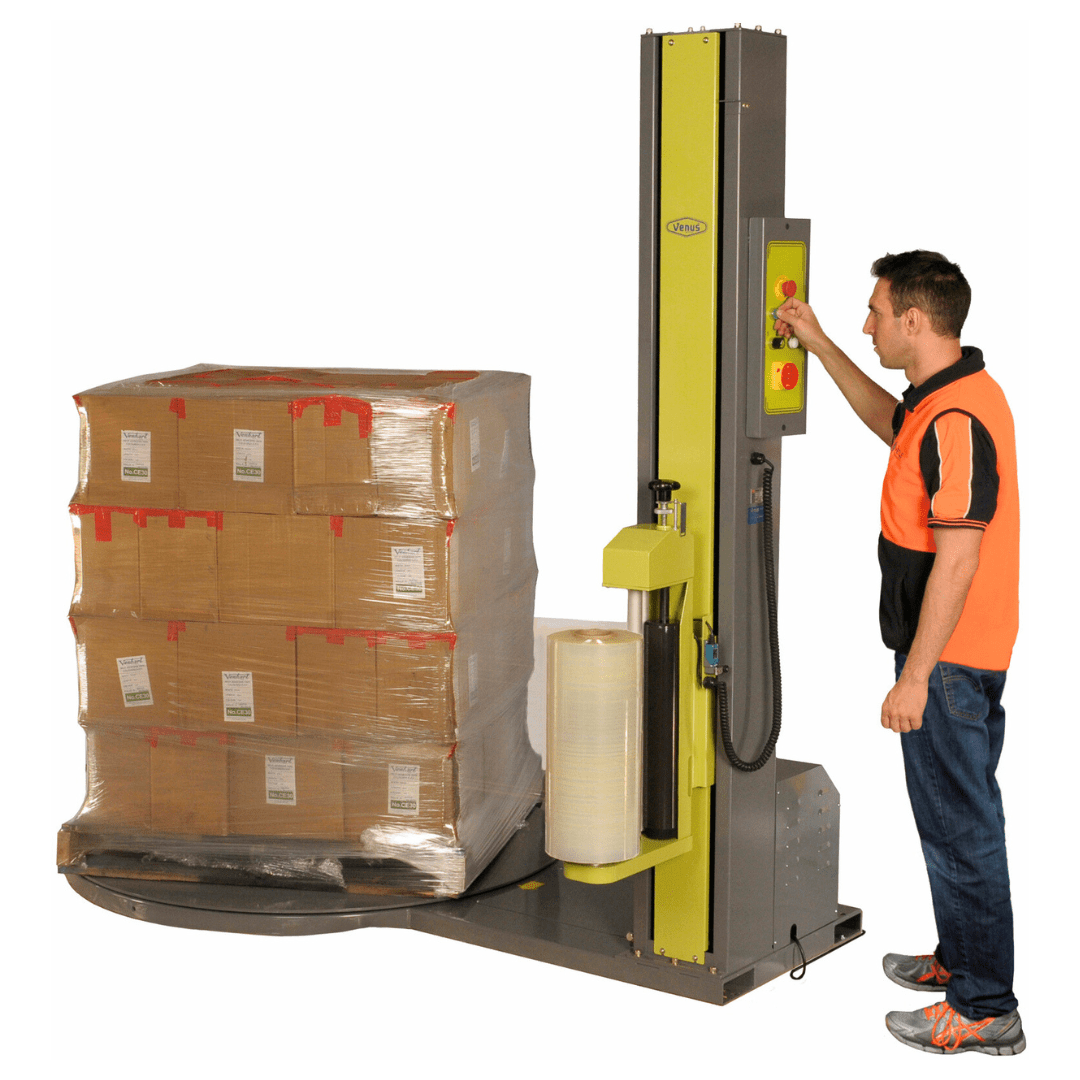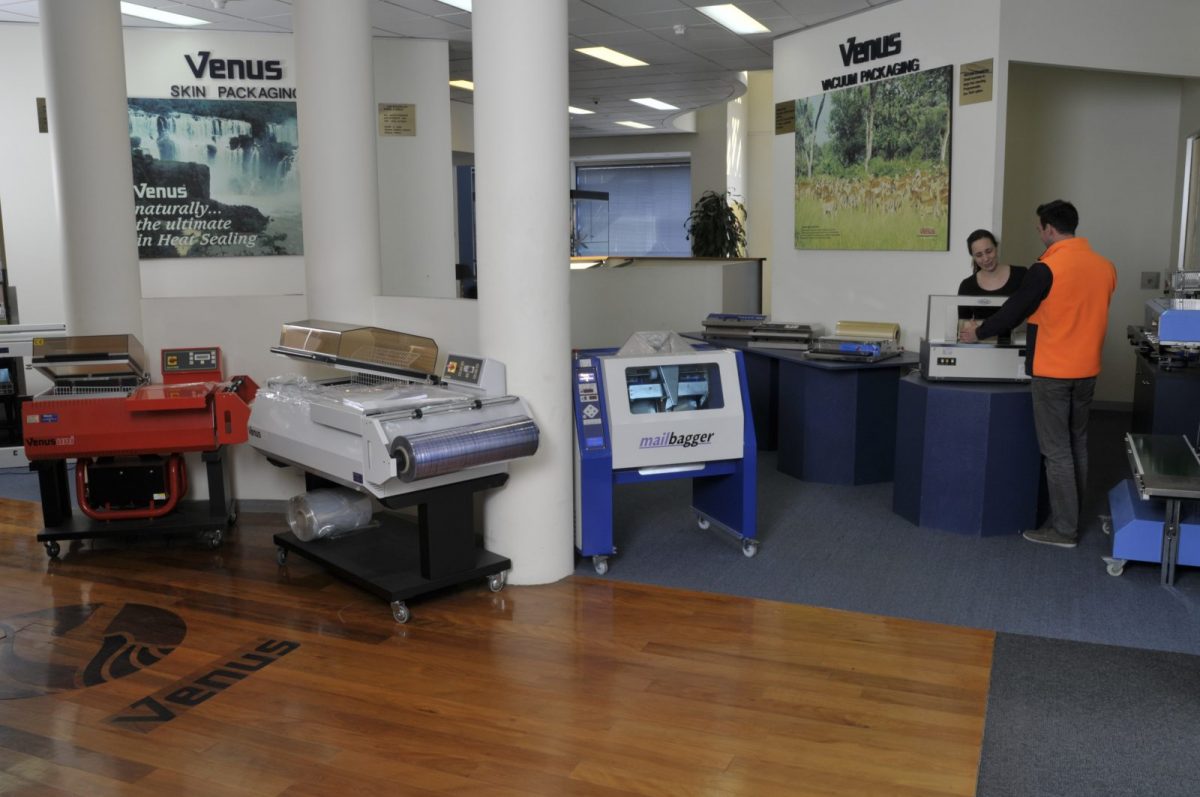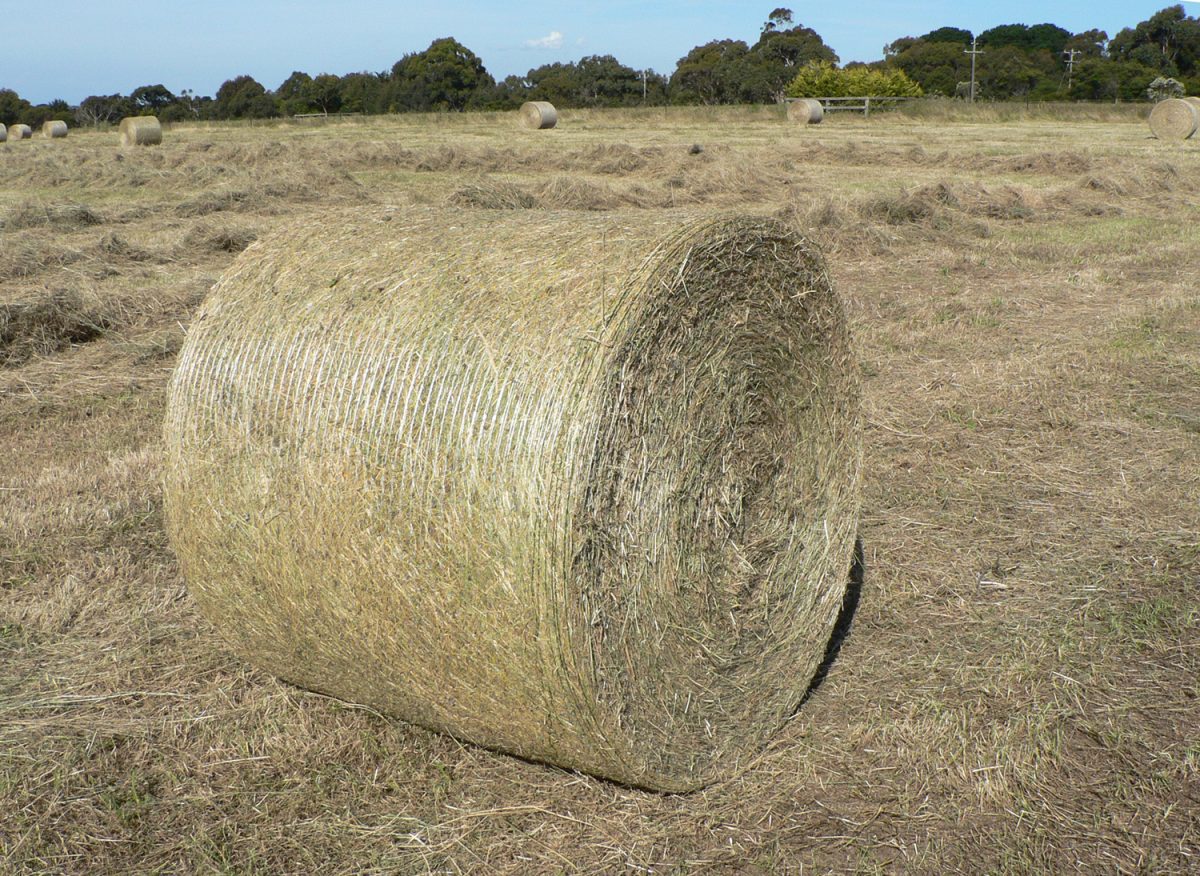 Back to blog
Back to blog
Fact Sheet: Venus Vacuum Sealers
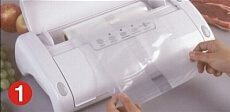
Why vacuum pack?
Exposure to air aids the growth of bacteria in most foods. Sealing the food in a bag from which the air has been removed greatly inhibits bacterial growth. Foods stay fresh longer and retain their flavour, nutritional value and sales appeal.
Which foods can be vacuum packed?
Any food can be vacuum packed but the unique characteristics of each food must be considered. For example a high vacuum sealer might crush delicate foods such as berries. See "Vacuum sealing tips." (Below).
How long do vacuum packed foods last?
Some foods will last up to 5 times longer than without vacuum packing. But it depends on the type of food and its quality before packing. It is important to remember that foods that normally need to be kept cool to prevent spoilage still need to be refrigerated or frozen as usual.
Vacuum sealing tips
- Freeze liquids such as soups and delicate foods such as berries before vacuum sealing.
- Avoid overfilling. For bags leave 7cm space above contents, for canisters leave 2.5cm.
- For powdery foods place a coffee filter or folded paper towel in the bag below the seal area.
Making Bags

Unroll the desired length.
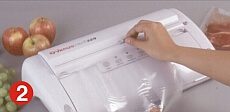
Cut off with sliding cutter.
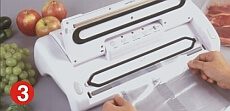
Place open end on seal bar.
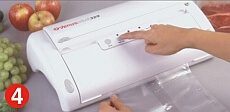
Close lid. Lock down. Press "Seal Only" button.
Sealing Bags
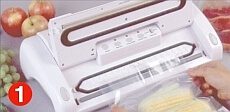
Place open end of filled bag below air outlet.
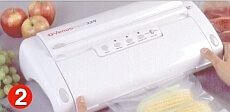
Close lid. Lock down. Set desired seal time.
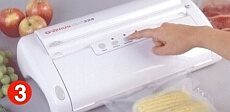
Press "Vacuum Seal" button. Vacuum light comes on.
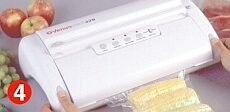
When vacuum light goes out, release lid.
Sealing Canisters
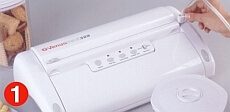
Attach connector to canister port.
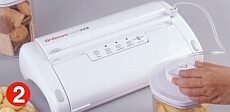
Place connector cap over centre of canister lid.
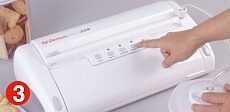
Press 'Canister Only' button. Canister light comes on.
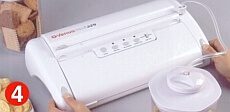
When canister light goes out, release lid.








